1. Fire Blight Infection Predicted on 22 April for Any Apple Orchards Still in Bloom; 2. Scab and Rust a Continuing Risk, Apply Fungicides Before Rains 21-22 April
(1) If any commercial apple cultivars for fresh fruit production, young non-bearing orchards, or cider cultivars are still in bloom (young flowers opening), they will need protection before 22 April for fire blight infection predicted on that day with oncoming rain events 21-22 April. Before that, on 17-21 April the EIP risk is above 100 and colors in the NEWA fire blight EIP model shows orange boxes with EIP ranging 106-304 for different locations. This presents a risk if you are providing water with the spray application of a fungicide, insecticide, or a thinner, but you did not add streptomycin into the same tank. Water from your spray application can trigger the infection if you do not add streptomycin to your tank and the model will not account for that with a red box indicating infection (it only uses natural and not human caused wetting events to give infection predictions). Here are the color codes in EIP model of NEWS and what they mean as well as the outputs from the EIP model:

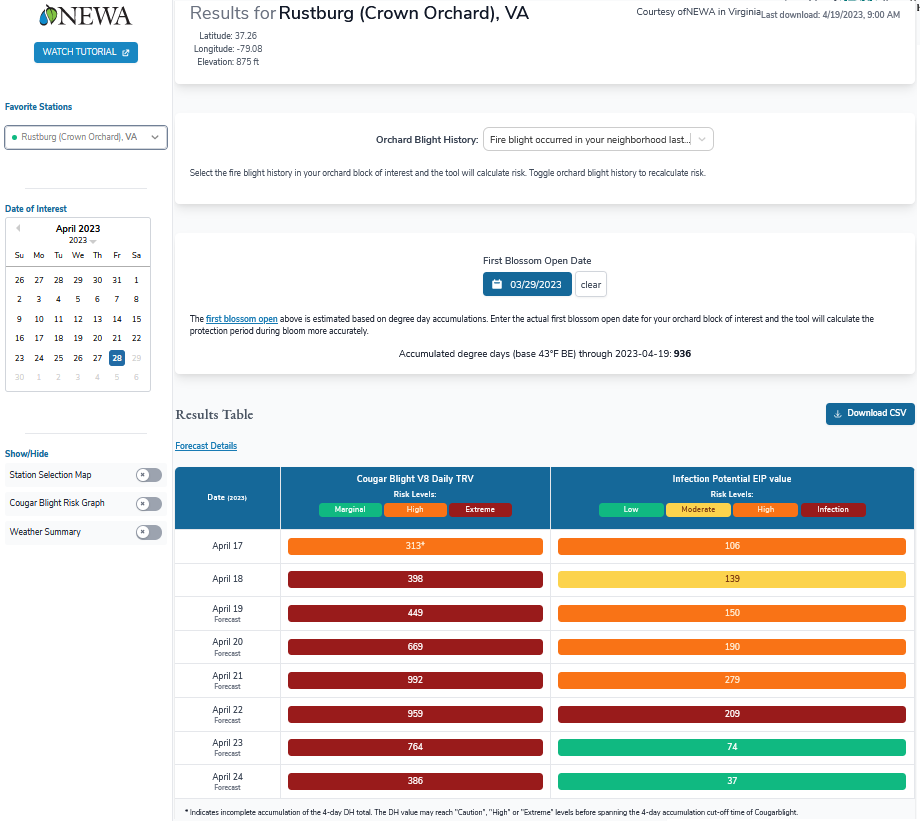
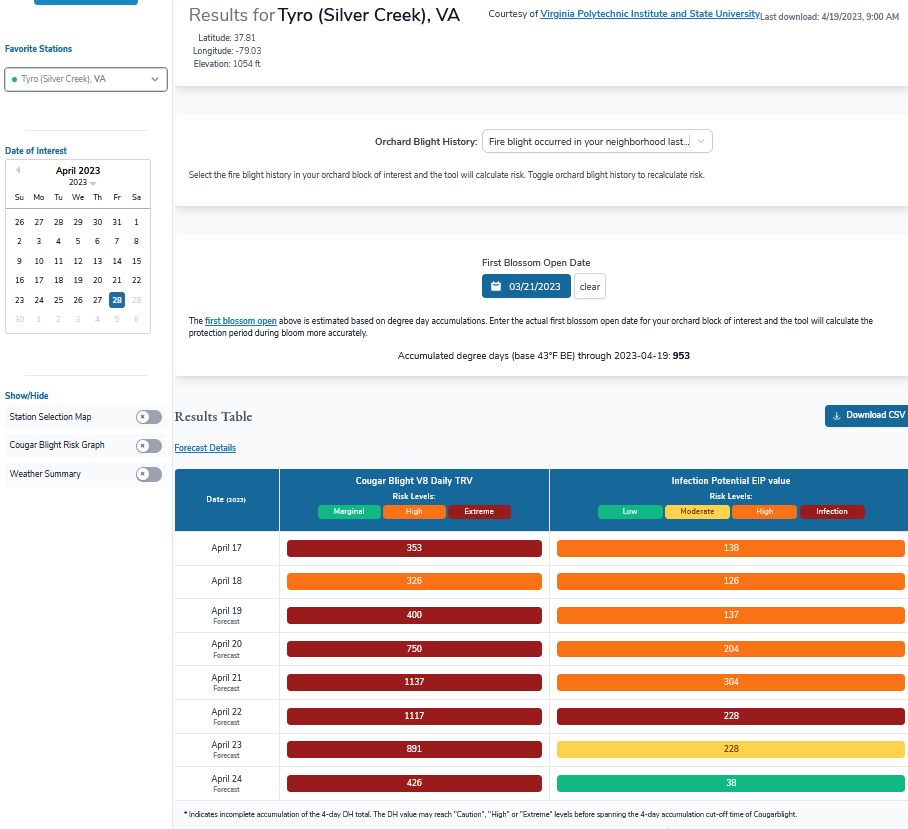
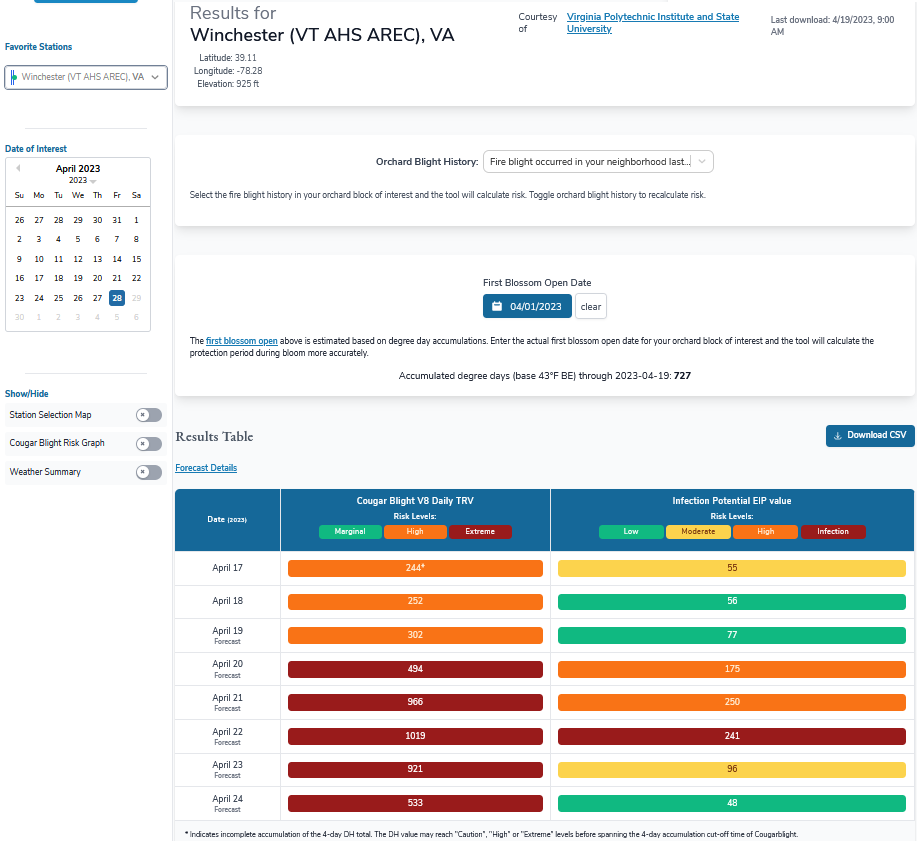
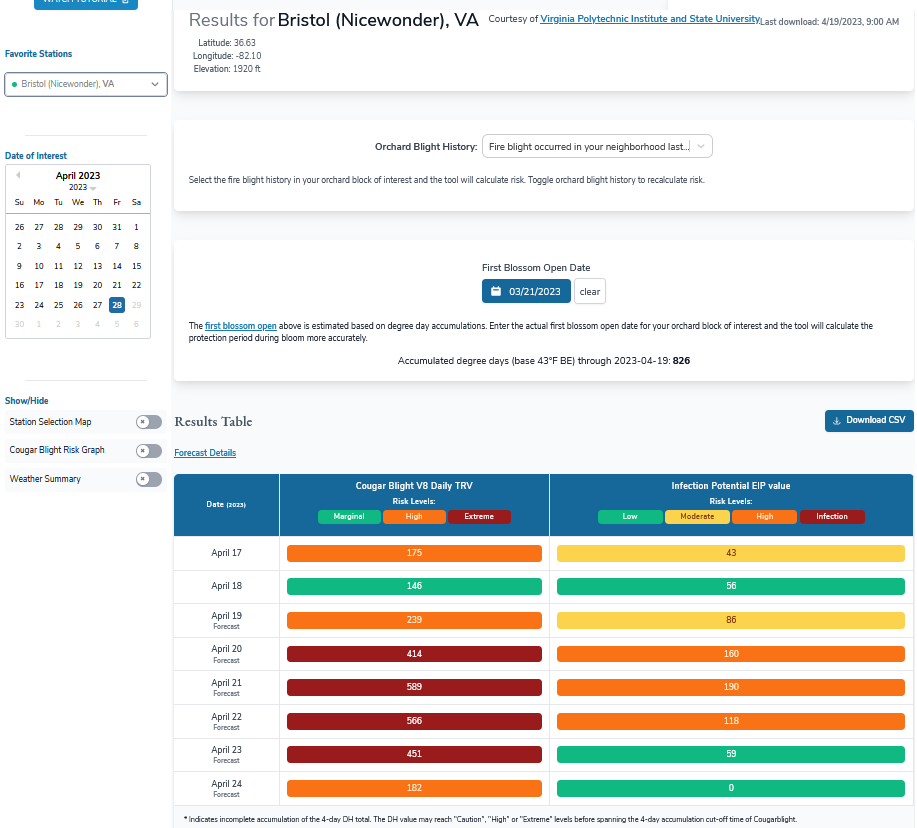
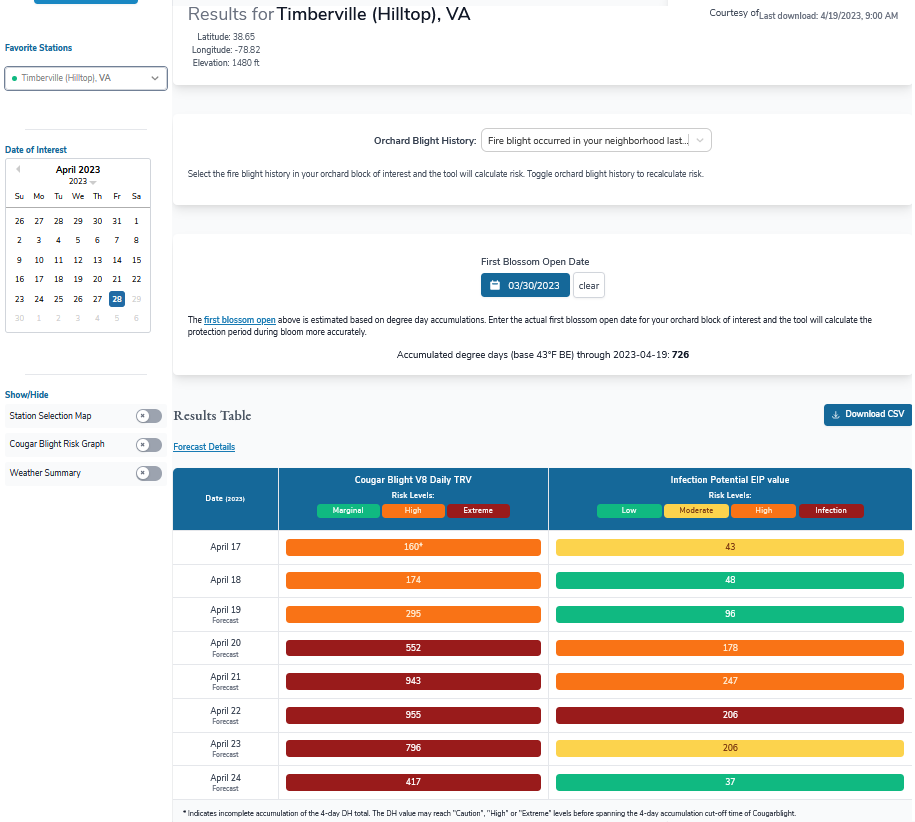
(2) Scab and rust infections will continue to be a risk. At petal fall, I would recommend using Rally, Topguard, Rhyme or Procure plus mancozeb which will control powdery mildew, scab and rust (stop mancozeb at 77 days before harvest for early maturing cultivars), but if powdery mildew was not an issue last year, you can use Inspire Super plus mancozeb instead which is best option for scab and rust control. Another tank mix consideration is Fontelis, Sercadis, Miravis or Excalia plus mancozeb for scab and powdery mildew control at the same time. Juniper rusts can have extended infection periods up until 1st or 2nd cover, and even later in Winchester, as I do not see galls fully orange and swollen yet because we had dry weather for the most part this spring. Therefore continued DMI (SI) fungicide applciatins might be needed this year until galls are depleted from basidiospores and dry. Warm wet weather at petal fall can allow Botrytis to infect the dying flower petals and move from petals into sepals where it can remain quiescent until fruit are moved into storage where the Botrytis can cause gray mold storage decay. Using Inspire Super at petal fall and/or first cover is be the best option because it contains cyprodinil, a fungicide that is effective against Botrytis (if Botrytis is not resistant to this fungicide). Powdery mildew can have an extended infection periods in highly susceptible cultivars until first or second cover, so reserving DMI fungicides for use by second cover in these cases is necessary. If powdery mildew was not an issue last year, Inspire Super plus mancozeb would also be my recommendation for the first cover (10 days after petal fall). If mildew was more of a concern for you, use Aprovia, Fontelis, Sercadis, Miravis or Excalia plus mancozeb (3 lb/A). Depending on a year, right before or around first cover primary scab season usually ends, and emphasis shifts more to other diseases.
